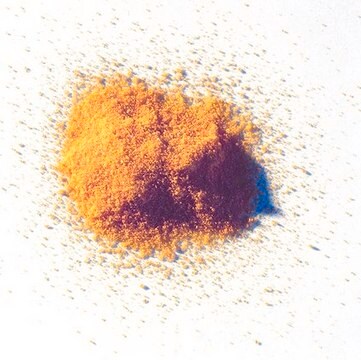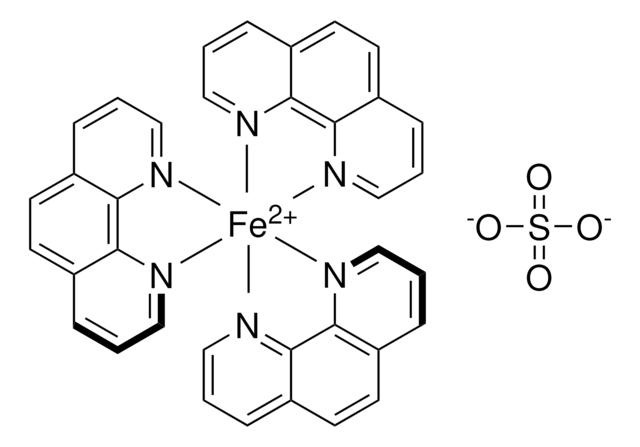Kluczowe dokumenty
229547
Ammonium cerium(IV) nitrate
≥99.99% trace metals basis
Synonim(y):
Ceric ammonium nitrate
About This Item
Polecane produkty
klasa czystości
for analytical purposes
Poziom jakości
Próba
≥99.99% trace metals basis
Formularz
crystalline
przydatność reakcji
reagent type: oxidant
zanieczyszczenia
≤100.0 ppm Trace Metal Analysis
ciąg SMILES
N.N.[Ce+4].O[N+]([O-])=O.O[N+]([O-])=O.[O-][N+]([O-])=O.[O-][N+]([O-])=O.[O-][N+]([O-])=O.[O-][N+]([O-])=O
InChI
1S/Ce.2HNO3.4NO3.2H3N/c;6*2-1(3)4;;/h;2*(H,2,3,4);;;;;2*1H3/q+4;;;4*-1;;
Klucz InChI
WIBGOERAEYJBOT-UHFFFAOYSA-N
Szukasz podobnych produktów? Odwiedź Przewodnik dotyczący porównywania produktów
Powiązane kategorie
Zastosowanie
Hasło ostrzegawcze
Danger
Zwroty wskazujące rodzaj zagrożenia
Zwroty wskazujące środki ostrożności
Klasyfikacja zagrożeń
Acute Tox. 4 Oral - Aquatic Acute 1 - Aquatic Chronic 1 - Eye Dam. 1 - Met. Corr. 1 - Ox. Sol. 2 - Skin Corr. 1B - Skin Sens. 1A
Kod klasy składowania
5.1B - Oxidizing hazardous materials
Klasa zagrożenia wodnego (WGK)
WGK 3
Środki ochrony indywidualnej
Eyeshields, Gloves, type P3 (EN 143) respirator cartridges
Wybierz jedną z najnowszych wersji:
Masz już ten produkt?
Dokumenty związane z niedawno zakupionymi produktami zostały zamieszczone w Bibliotece dokumentów.
Klienci oglądali również te produkty
Produkty
Oxidation and reduction reactions are some of the most common transformations encountered in organic synthesis
The rare earth elements impact nearly everyone in the world. All of the people living in advanced technological countries and almost all those living in third world countries utilize the rare earths in their everyday living—the car that one drives (gasoline is refined from oil using rare earth catalysts and catalytic converters reduce the polluting emissions from the automotive exhaust), watching the news on TV (the red and green colors in TV screens), the telephones and computers we use to communicate (the permanent magnets in speakers and disc drives), just to name a few examples.
Nasz zespół naukowców ma doświadczenie we wszystkich obszarach badań, w tym w naukach przyrodniczych, materiałoznawstwie, syntezie chemicznej, chromatografii, analityce i wielu innych dziedzinach.
Skontaktuj się z zespołem ds. pomocy technicznej













